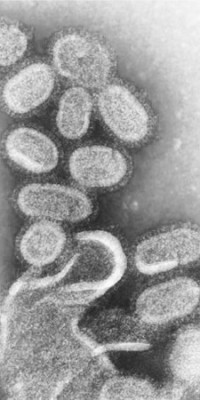H9N2 is a subtype of the species Influenza A virus (bird flu virus). It is the most common subtype of influenza viruses in Chinese chickens and thus causes great economic loss for the poultry industry, even under the long-term vaccination programs.
Over the years the H9N2 influenza strain caused illness in several children aged nine months to 5 years in Hong Kong with the latest occurring in December 2009.
Transmission:
The H9N2 influenza virus can be transmitted by air droplet, dust, feed, or water. Chickens usually seemed to be healthy after the infection but some of them do show depression and ruffled feathers. The virus replicates itself in the trachea. It makes chickens more susceptible to secondary infections, especially Escherichia coli infections with a mortality rate of at least 10%. Also, the trachea or bronchi are easily embolized by mucus when the ventilation is poor, leading to severe respiratory disease and death.
Symptoms:
In Birds:
With the exception of crows, all directly inoculated and contact birds showed clinical signs, varying in severity with quail showing the most pronounced clinical signs. Virus shedding was detected in all infected birds, with quail showing the greatest levels of virus secretion, but only very low levels of virus were found in directly infected crow samples.
In Humans:
Results from recent ferret research on the H9N2 subtype has demonstrated an increased theoretical threat to humans from the potential emergence of novel subtypes of avian influenza.


